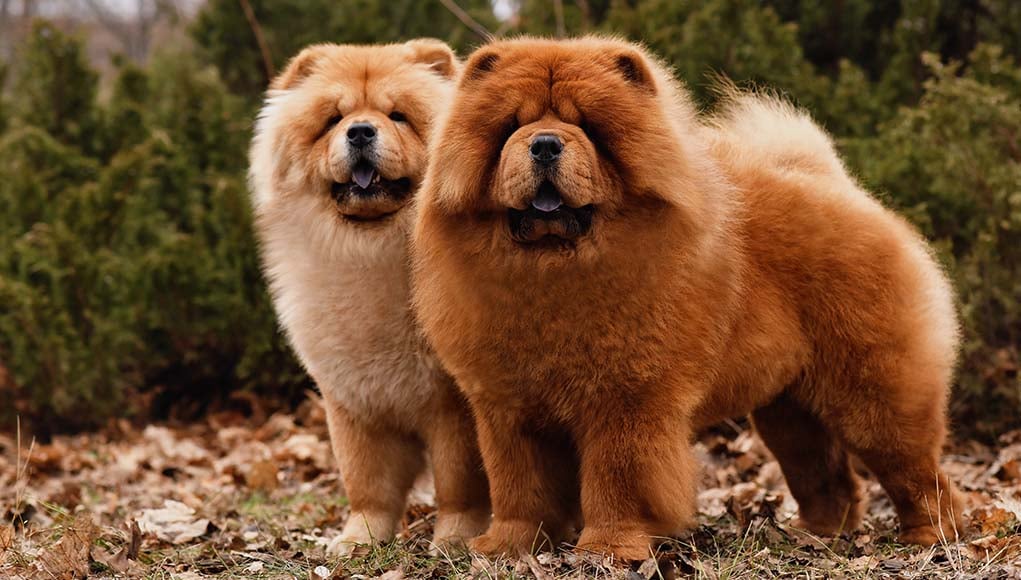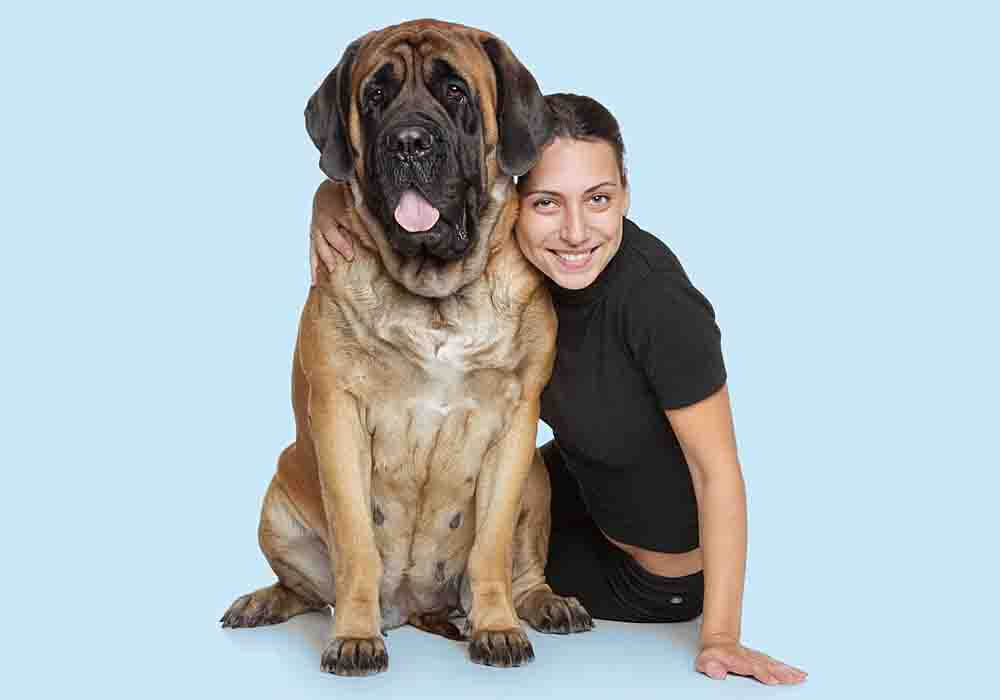Mastiff dogs have a lot of skin due to a variety of reasons. One of the most important reason is that it provides them an advantage during combat. It helps to shield their skin from scratches and bites from other animals. When a predator attacks a Mastiff they can bite into the loose skin, which allows the dog to move and then bite back, without sustaining serious injuries. The Mastiff's loose skin allows it to move and turn its head with ease, which is crucial in tracking prey and hunting. The skin on their necks and faces can also form wrinkles that help channel the water away from their mouths and eyes, which is helpful when they're drinking or swimming. The loose skin can also aid in regulating the dog's body temperature. The skin acts as insulation which helps to keep the dog warm in cold weather and cool in hot temperatures. Dogs can regulate their body temperature through sweating and dispersing the heat via their skin. Mastiffs as well as other breeds have developed loose skin that has served several functions such as protection, flexibility, and temperature regulation. Follow the best loose skin puppy tips for website info.

Why Do Mastiff Dogs Have Skin That Is Saggy?
Mastiffs have saggy skin due to their genes and selective breeding. They were originally bred as working dogs to serve various reasons, such as guarding, hunting, and fighting. They had an distinct advantage due to their loose skin that was saggy and loose. Mastiffs have a number of reasons to have skin that is loose. First, it protects them from injuries in fights , or when working in difficult terrain. If another animal is attacked the skin is loose, it assists to absorb the impact of bites or scratches and stops the skin from being ripped. Mastiffs are able to move around with ease due to the loose skin. Extra skin around their necks allows Mastiffs to rotate their heads, and to move their jaws more easily. This is vital to hunt prey, tracking prey and protecting their territory. Mastiffs' oily, saggy skin aids in regulating their body temperature. The skin folds work as an insulation that keeps them warm during colder temperatures and cool during hot temperatures. The loose skin also permits them to sweat more easily, which helps to disperse heat more efficiently. Overall, the saggy skin on Mastiffs is a result of their unique breeding history and serves several crucial functions for their physical abilities and survival. Take a look at the top dog breed with saggy skin advice for website examples.

When And How Often Should Your Tosa Inu (Japanese Mastiff) Be Groomed?
Tosa Inus shed moderately through the season. Their coats are thick and short. Tosa Inus have a small, dense coat, which sheds moderately throughout the year.
Brushing- Cleanse your Tosa Inu at least once a week to remove dead hair, and spread natural oils through their coat. For this, you'll need either a slicker, or rubber brush.
Bathing- You only require bathing your Tosa Inu when they are dirty or begin to smell. To bathe your Tosa Inu, you should apply mild dog shampoo as well as warm running water. Make sure you clean them well to eliminate any remaining shampoo.
Nail trimming – Trim your Tosa Inu’s nail every between four and six weeks. This will stop them from getting too long and creating discomfort, or pain.
Tosa Inu's ears should be cleaned at minimum every daily to avoid infection. Make use of a cotton toothbrush or a soft, damp cloth soaked in an ear-cleaning liquid that is recommended by your veterinarian.
Tosa Inu Dental Care: Clean your Tosa Inu's tooth at least two or three times per week to prevent plaque and bad breath. You can use toothbrushes and toothpastes for your dog and chews for your teeth or other toys.
It is important to praise and reward your Tosa Inu's good behavior during grooming sessions. Also, make sure to speak with your veterinarian for advice if your Tosa Inu has any hair, skin, or health concerns. Have a look at the most popular Tosa Inu Japanese Mastiff for website tips.

How Important Is Obedience Training And Early Socialization For Spanish Mastiffs?
Spanish Mastiffs should be trained in obedience and socialized as early as possible. It assists in ensuring that they grow into well-behaved, comfortable adult dogs that are able to adapt to different situations as well as people.Since Spanish Mastiffs are large and powerful dogs, obedience training is particularly crucial to teach them the basic commands like "sit," "stay," "come," and "heel." They are taught how to interact with people and other dogs as well as the boundaries they are expected to observe.
Spanish Mastiffs must be socialized from an early age to learn how best to behave around animals and people. The early exposure to different sounds, smells, and textures can help them feel more relaxed and secure in new environments, reducing the risk of fear-based aggression or anxiety.
Spanish Mastiffs can be taught to obey commands and socialize early, which will aid them in becoming well-adjusted, obedient and loving pet owners for families as well as individuals. See the most popular Spanish mastiff breed ideas for site recommendations.
What is the importance of obedience training And early socialization for bully Kutta (Pakistani Mastiffs)?
Bullykutta (Pakistani Maliffs) due to their size and powerful personalities, need obedience training and early socialization. Bully Kuttas are often extremely stubborn and difficult dogs to train if they're not socialized in a timely manner. It is essential for them to be exposed to lots of species of animals, people and other animals throughout their critical period of socialization. It is usually between 3 and 14 week old.
Bullykuttas are extremely strong and large, which makes the importance of obedience training. Large dogs and their strength need to be taught basic commands, like "sit,"'stay' and "come", to ensure their control and stop them from becoming a risk to themselves and other dogs. Positive behavior is encouraged by positive reinforcement techniques like rewards and praise.
Bully Kuttas require early socialization and obedience training. They require consistent and positive training to develop into happy, peaceful, well-adjusted and happy members in your family. Follow the best Bully Kutta Pakistani Mastiff breed link for website recommendations. Read more Best Info When Choosing The Best Mastiff Msftip fa69a8c
